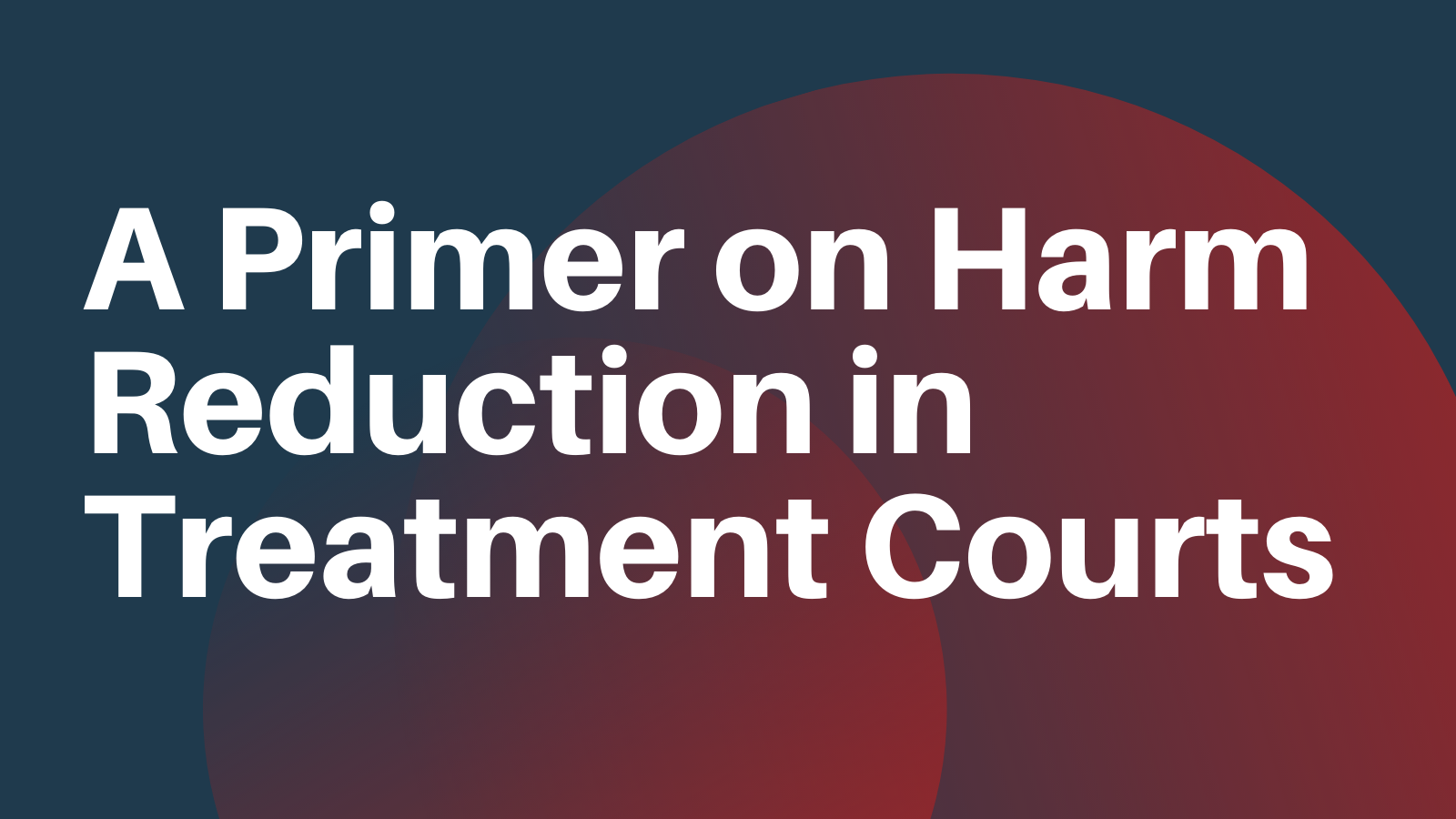Harm reduction is an evidence-based approach to providing life-saving tools and strategies to create positive change in the lives of individuals who misuse substances. Unlike some approaches that concentrate primarily on abstinence, harm reduction focuses on risk reduction, health promotion, and personal empowerment to improve safety and well-being.[1] The concept of harm reduction for substance use disorders has existed since at least the 1980s when syringe exchanges and other public health programs were implemented to reduce the spread of HIV.[2] But in recent years, awareness of harm reduction has increased. It is one of the four key strategies included in the U.S. Department of Health and Human Services’ (HHS) Overdose Prevention Strategy. It was also named a critical element of the Biden-Harris Administration’s National Drug Control Strategy in 2022. The President’s innovative strategy includes “expanding access to high impact harm reduction tools like naloxone [and] quickly connecting more people to treatment,” said Dr. Rahul Gupta, director of the White House Office of National Drug Control Policy (ONDCP), in a May 2022 press release.[3]
An important application of harm reduction is in the criminal justice system, where the approach can be used to reduce the risk of overdose and death for individuals and their communities. This article provides a primer on how harm-reduction strategies fit within treatment courts. It serves as a companion to the SAMHSA’s GAINS Center webinar, Harm Reduction Strategies in Treatment Court: What Fits and What Doesn’t.
What Is Harm Reduction?
Harm reduction is an approach that advances public health by reducing the negative consequences associated with drug misuse. It promotes working directly with people who misuse substances to reduce the associated risks, such as overdose, infectious disease transmission, and death, and improves the quality of life through physical, mental, and social supports.[4] Harm reduction meets people where they are and offers low-barrier resources, pathways, and connections to services, including medication and recovery services, but also social supports such as housing, healthcare, substance use disorder (SUD) treatment, and others. Common harm reduction strategies include medication-assisted treatment (MAT), naloxone kits, fentanyl test strips (FTS), and syringe service programs (SSP), also called clean needle or syringe exchanges.
What Is the Evidence Base?
“Harm reduction works by addressing broader health and social issues through improved policies, programs, and practices.”[5] There is significant evidence that harm-reduction practices can improve the safety and well-being of individuals who misuse substances. For instance, people who inject substances using an SSP are five times more likely to enter treatment for substance use disorder. Additionally, people who use an SSP regularly are nearly three times as likely to report a reduction in injection frequency as those who have never used an SSP.[6] In addition to improving health and reducing cravings, MAT saves lives by reducing the risk of death from overdose and other drug-related causes.[7] One study found that providing naloxone to “likely bystanders” of overdose reduced deaths by 42.5 percent.[8] Similarly, the harm-reduction practice of distributing FTS increases safety and may spur behavior change. A study with people who inject drugs found that 43 percent of individuals who reported using FTS prior to drug consumption also reported a difference in “drug use behavior” when the test was positive for fentanyl.[9]
How Can Harm Reduction Strategies Be Integrated into Treatment Courts?
Treatment courts are highly effective at keeping people with SUD out of incarceration and supporting them on a path to recovery. Treatment courts approach SUD from a holistic lens that considers all the factors in a person’s life that may contribute to or exacerbate their substance use, such as employment, housing, financial stability, or family issues. They work to reduce harm to the individual, their family, and their community.[10] From this perspective, treatment courts are a natural fit for employing life-saving harm-reduction strategies to help people who use drugs stay safe and improve their lives.
“The best-practice standards of treatment courts not only increase the opportunity to get good outcomes, reduce crime, make communities safer, save lives, and help people discover thriving long-term recovery, but they also avoid doing harm,” says Terrence D. Walton, MSW, chief operating officer, All Rise, formerly the National Association of Drug Court Professionals. “And this includes keeping them in the community, not incarcerated, while they work on their path to recovery. It makes good sense to do what we can to reduce the negative effects of drug use, help people stay alive, and keep themselves and their communities safe, even while they are still trying to quit drugs.”
Not all harm-reduction strategies or approaches are a good fit for treatment courts, but many are. Treatment courts are both a public-health intervention and a public-safety intervention. The population served is high need (i.e., living with SUD and/or other co-occurring disorders) and high risk for continued involvement in the criminal justice system due to substance use. So, according to Walton, for a harm reduction strategy to be a good fit, it must be both effective in reducing harm and practical for implementation in a typical, evidence‐based treatment court where the focus is abstinence. The strategies that might best fit the treatment court model include educating and increasing public awareness, expanding access to medication and services, and increasing the practice of testing for the presence of fentanyl in other drugs prior to consumption.
First, overdose prevention and education apply to people who use drugs, their families, and their communities. Education might include strategies like “don’t use alone” or information on the increased risk of overdose or death that comes with resuming use immediately after release from incarceration. Education may also include informing participants where they can find other harm-reduction supports and community-based harm-reduction programming, such as SSPs, that might be outside the scope of the treatment court. A central harm-reduction strategy for treatment courts is access to treatment, including MAT. It is an Adult Drug Court Best Practice Standard to not exclude individuals with a valid prescription for a substance use disorder treatment medication. “There are very few issues we have worked on more as it relates to effective treatment and recovery management than helping treatment courts and all parts of the justice system embrace the pathways of medication for those who want it and need it,” says Walton. “The need or desire for medications for addiction or mental health conditions should not impact someone’s ability to enter a treatment court, to progress through a treatment court, or to complete a treatment court.” Finally, access to opioid overdose reversal medication and FTS fit within treatment court goals of reducing harm to individuals and communities and is not in conflict with any standards of the courts.
It’s important to note that treatment courts are designed with the goal of abstinence from substances for individuals assessed as high risk or high need. However, employing some harm-reduction strategies for individuals on their recovery journey can be a helpful and successful element of the treatment court’s approach.
Resources for More Information
- SAMHSA: Harm Reduction
- Centers for Disease Control and Prevention (CDC): National Harm Reduction Technical Assistance Center
- Center for Justice Innovation: Bridging the Gap: A Practitioners Guide to Harm Reduction in Drug Courts
- All Rise: Adult Drug Court Best Practice Standards
- HHS: Overdose Prevention Strategy
- ONDCP: National Drug Control Strategy
References
[1] Harm Reduction (samhsa.gov)
[2] Don C. Des Jarlais, “Harm Reduction in the USA: The Research Perspective and an Archive to David Purchase,” Harm Reduction Journal 14, no. 1 (December 2017): 51, https://doi.org/10.1186/s12954-017-0178-6.
[3] Statement from Dr. Rahul Gupta on Today’s CDC Overdose Death Data (whitehouse.gov)
[4] The White House Executive Office of The President, ONDCP. National Drug Control Strategy. (whitehouse.gov)
[5] Harm Reduction (samhsa.gov)
[6] Syringe Services Programs (SSPs) (cdc.gov)
[7] See for instance: Claudia R. Amura, Tanya R. Sorrell, Mary Weber, Andrea Alvarez, Nancy Beste, Ursula Hollins, and Paul F. Cook, “Outcomes from the Medication Assisted Treatment Pilot Program for Adults with Opioid Use Disorders in Rural Colorado,” Substance Abuse Treatment, Prevention, and Policy 17, no. 1 (December 2022): 1, https://doi.org/10.1186/s13011-021-00424-4.
[8] Christopher Keane, James E. Egan, and Mary Hawk, “Effects of Naloxone Distribution to Likely Bystanders: Results of an Agent-Based Model,” International Journal of Drug Policy 55 (May 2018): 61–69, https://doi.org/10.1016/j.drugpo.2018.02.008.
[9] Nicholas C. Peiper, Sarah Duhart Clarke, Louise B. Vincent, Dan Ciccarone, Alex H. Kral, and Jon E. Zibbell, “Fentanyl Test Strips as an Opioid Overdose Prevention Strategy: Findings from a Syringe Services Program in the Southeastern United States,” International Journal of Drug Policy 63 (January 2019): 122–28, https://doi.org/10.1016/j.drugpo.2018.08.007.
[10] Treatment Courts Work (allrise.org)
Like what you’ve read? Sign up to receive the monthly GAINS eNews!



